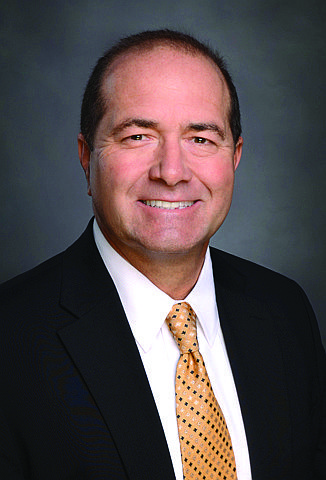- July 26, 2024
-
-
Loading

Loading

As Sarasota County Government finalizes its budget for adoption this month, we encourage citizens to educate themselves about the budget process so they understand the value that county government brings to their lives. The budget includes a wide range of services, such as: operating a water/sewer utility system; building and maintaining infrastructure like roads and public facilities; managing a public transit system; and ensuring our fire and emergency services adequately protect our community. Our budget is comprised of various other services such as the Sarasota County Sheriff’s Office, health and human services, lifeguards, parks and libraries. We welcome the public’s input about the budget and these services at two upcoming hearings.
The proposed budget for fiscal year 2015 is $1.1 billion. A common question we’re asked is about the size of the budget, and how does a county government spend more than a $1 billion a year?
The simple answer is that we don’t. Governmental accounting rules and Florida statutes require local governments to follow a unique set of accounting principles and concepts. The $1.1 billion figure is derived from government “fund accounting,” which often results in what appears to be double-counting of revenues and expenditures. For example, if the county receives $20 million of property taxes in the General Fund, then transfers it to the Sarasota County Area Transit (SCAT) Fund, that same $20 million is counted as a revenue and expenditure in both the General Fund and SCAT Fund. So, our financial reports will show $40 million of revenues and expenditures. We also have departments that provide services internally (like Human Resources and Fleet Maintenance) but charge the user departments for their services. This requires transferring money from one fund to another. Internal money shifts account for more than $300 million of the total proposed budget.
Another question we’re often asked is how the county has millions to spend on a new stadium or a beach project, but not enough for operating services that might cost much less. This is caused by regulatory restrictions on a majority of our revenues.
The county cannot simply place all its revenues in an account and then spend at its discretion. By law, we are required to separate restricted revenues from our General Fund. So for example, if the county operates a utility system, we cannot take revenue from customers’ water bill payments to fund the salaries of lifeguards, because that expenditure is funded from general revenues. The utility system, along with services like stormwater and solid waste (garbage collection), operate like distinct businesses within the county, and the revenues collected are restricted to their respective purposes. Other restricted revenues include the Tourist Development Tax (a 5% levy on short-term/hotel stays), which is restricted to tourism-related expenditures such as construction of tourist-related facilities; promotion/advertising; and beach/shoreline maintenance. The 1% Infrastructure Surtax (a voter-approved countywide sales tax), is restricted to funding capital projects like building/improving roads, parks, libraries, fire stations or a jail. Gas taxes are restricted to transportation-related expenditures. What this means is the county could pay for the construction of a library with Infrastructure Surtax revenues, but the ongoing operating costs would need to be paid by general revenues.
By far, the single largest general revenue is property taxes (our tax base is still 32% below 2007 levels due to reduced property values). Although these revenues have decreased, the county has also reduced its costs while largely avoiding reductions to services. The county has been able to cut costs since 2007 by using technology, reducing staff, refinancing debt and combining/restructuring departments.
Sarasota County Government’s countywide property tax rate is currently the second lowest in the state of Florida (out of 67 counties). The county is one of only six in Florida with an “AAA” general obligation debt rating, and last month our utility system bonds were upgraded from “AA” to “AA+” with a stable outlook from Fitch Ratings, a global leader in credit ratings and research. Sarasota County’s budget includes a healthy reserve policy to address unforeseen circumstances, and the Board of County Commissioners continues to take a strategic approach to positioning the county for long-term financial sustainability.
More detailed information about the Sarasota County budget is available on our website: scgov.net/Finance. In addition, two public hearings are scheduled to gather public comment. The first one was held Sept. 8, at the R.L. Anderson Administration Center, 4000 S. Tamiami Trail, Venice. The second hearing will be held at 5:30 p.m. Monday, Sept. 22, in the Administration Center, 1660 Ringling Blvd., Sarasota.
We encourage our residents to learn more about their local government. Please visit scgov.net for more information about Sarasota County and the services we provide.
Tom Harmer is county administrator of Sarasota County Government.